- News
- Reviews
- Bikes
- Accessories
- Accessories - misc
- Computer mounts
- Bags
- Bar ends
- Bike bags & cases
- Bottle cages
- Bottles
- Cameras
- Car racks
- Child seats
- Computers
- Glasses
- GPS units
- Helmets
- Lights - front
- Lights - rear
- Lights - sets
- Locks
- Mirrors
- Mudguards
- Racks
- Pumps & CO2 inflators
- Puncture kits
- Reflectives
- Smart watches
- Stands and racks
- Trailers
- Clothing
- Components
- Bar tape & grips
- Bottom brackets
- Brake & gear cables
- Brake & STI levers
- Brake pads & spares
- Brakes
- Cassettes & freewheels
- Chains
- Chainsets & chainrings
- Derailleurs - front
- Derailleurs - rear
- Forks
- Gear levers & shifters
- Groupsets
- Handlebars & extensions
- Headsets
- Hubs
- Inner tubes
- Pedals
- Quick releases & skewers
- Saddles
- Seatposts
- Stems
- Wheels
- Tyres
- Health, fitness and nutrition
- Tools and workshop
- Miscellaneous
- Buyers Guides
- Features
- Forum
- Recommends
- Podcast
BUYER'S GUIDE
 Everything you need to know about disc brakes Nov 2021
Everything you need to know about disc brakes Nov 2021Everything you need to know about disc brakes - read our definitive guide
Disc brakes have been used on the road for years but in the last couple of seasons they've become mainstream as major bike makers have offered disc-equipped bikes covering all sectors of the market from gravel bikes to endurance bikes to full-on road race rigs. With the UCI now allowing them in the professional peloton, discs are an ever more familiar part of the road riding landscape.
-
Disc brakes provide better stopping power than rim brakes, especially in wet or cruddy conditions
-
A bike with disc brakes will still be rideable with a broken spoke or damaged rim, problems that can stop a rim-braked bike dead in its tracks
-
They're more expensive, but disc brakes with hydraulic hoses to get braking force from lever to pad work better than cable-actuated systems
-
Semi-hydraulic calipers like TRP's Hy/Rds are a sensible compromise upgrade
9 of our favourite disc brakes
- Shimano Tiagra ST-4720 STI & BR-4770 brakes — £187.99/brake & lever
- TRP Hylex RS brakes — £130
- Shimano 105 R7020 — £425.00/set
- TRP Spyre Mechanical Disc Brakes — £43.00-£55.00
- Yokozuna Motoko — £285/pr
- TRP Hy/Rd mechanical interface hydraulic disc brakes — £75.00/brake
- Shimano RS-505 hydraulic discs — £249.00/pair
- Shimano BR-R785 Di2 road hydraulic discs — £296.64/pair
- SRAM Rival 22 shifters/hydraulic disc brakes — £235.99/brake
What are the advantages of disc brakes?
Let’s start right at the beginning. We’re all familiar with traditional bicycle rim brakes where the brake pads operate on the wheel’s rim, right? With a disc brake the pads instead act on a metal rotor that’s attached to the wheel’s hub. Simple enough.
What’s the advantage of that? People sometimes say that they can easily lock up the wheels of a road bike, stopping them totally with very little effort, so there’s no point in having any more power.
One key point is that disc brakes can offer more control than rim brakes before they lock up. You have more of a braking range with which to work, so you’re less likely to skid.
SRAM’s Product Manager Paul Kantor told us, “I can certainly lock up my wheel with a carbon rim and a mechanical rim brake, but if I do that I’m still just sliding down the road and that sucks. Locking up the wheel isn’t hard but if that were our goal we’d just sell you a stick that you could ram in there and you’d be done!
“Everything we’ve focused on is prior to locking up the wheel. You can take off more speed with greater control prior to locking up the wheel. Some people refer to that as ‘modulation’. That’s a term we don’t really care for, but it’s fine. We’re really talking about decelerating substantially without locking up the wheel.”
With a rim brake system, you want the wheel rim to be as light as possible, you need it to be strong, and it also has to provide the braking surface. Anyone who has ever ridden carbon-fibre rim brake wheels knows that while they might be lightweight and fast, the braking performance isn’t brilliant, especially in wet conditions.
A disc brake system allows manufacturers more scope to innovate with the braking surface because it doesn’t need to operate as the wheel rim too. Shimano, for example, equips its hydraulic disc brakes with what it calls Ice Technology that features a rotor with a three-layer sandwich structure of stainless steel and aluminium. It says that this provides a better radiation performance that reduces the temperature while braking.
Plus, with a disc system the braking surface, the rotor, is much further from the road than it is with a rim brake so it’s less likely to get wet from surface water. There are holes in a rotor that allow water to get out from underneath the brake pads too. The result is that disc brakes are far less likely than rim brakes to be affected by water or gunk thrown up from the road.
With a rim brake, the tyre has to pass through the brake calliper, but that's not the case with discs, so they free up space for wider tyres. That's part of the reason why discs have become popular for endurance and adventure bikes.
Linked to that, a side benefit of disc brakes is that your wheel can go out of true without rubbing on the brake pads.
Mechanical or hydraulic disc brakes?
You can divide disc brakes up into two types: mechanical and hydraulic.
Mechanical systems are operated by a cable, like the vast majority of rim brakes, while hydraulic systems use fluid to transfer the force from the lever to the calliper.
Pulling the brake lever in a hydraulic system moves a piston inside the master cylinder which forces brake fluid towards the brake calliper. This acts on the pistons in the brake calliper to push the brake pads against the disc rotor.
Mechanical disc brakes tend to be cheaper. TRP’s Spyre mechanical disc brakes, for example, are priced £69.99. You can use them with standard (non-hydraulic) dual-control levers. The Spyre is a dual piston design meaning that two pistons move equally against the rotor, as opposed to the single piston design of the Avid BB7 and Shimano CX75 mechanical disc brakes.
Hydraulic brakes are higher end and they perform better than either rim brakes or mechanical discs in just about every respect, but they’re more expensive. A SRAM Rival 22 hydraulic disc brakeset (you get both the shifter and the brake calliper), for example, is £302.
Hydraulic systems are more efficient than mechanical disc brakes so you need to apply less pressure at the lever for an equal level of braking power. This means you can get better modulation.
A hydraulic system is sealed so no contaminants can get in to affect braking performance, and complicated internal cable routing isn’t a problem, whereas it can add friction to a cable setup.
TRP’s Hy/Rd brakes are unusual in that they’re cable operated with hydraulic power in the callipers. We found them powerful, easy to live with, and the best solution so far for disc brakes with conventional brake/gear levers.
What about heat?
Whatever type of system you use, braking produces heat. There used to be concerns about the safety of carbon rim brake wheels during prolonged, heavy braking – we’re talking about Alpine-style descents here – but manufacturers seem to have got that technology sorted.
When it comes to discs, fade (the loss of braking power) can occur as a result of the buildup of heat in the system.
Shimano identified overheating as being of particular concern for discs on the road, the longer, faster descents (and smaller rotors) being likely to result in rotors and pads heating up more than they do off-road.
As mentioned above, to counter this Shimano’s IceTech rotors use a three-layer sandwich structure of stainless steel and aluminium, the aluminium being included because it transfers heat better than steel. These have wavy aluminium sections inboard of the brake track designed to maximise surface area for improved cooling. The pads have cooling fins that are made from aluminium for the same reason.
Check out the hottest disc-equipped road bikes.
Speaking about the development hydraulic brake systems, SRAM’s Paul Kantor said, “Where you might have trouble is with some big guy riding down the Stelvio for 45 minutes dragging the brake, and we were worried that we’d have boiling issues there. But what happens is that the brake reaches a steady state where the heat isn’t increasing.
“What we did see is that when we decelerated from 50-60kph down to 15kph in 1-2 second increments on a switchback descent there was friction fade where you’d lose some of your coefficient of friction in the pad. That is much better than having the system boil.
“We could induce this on a 140mm rotor so we altered the backing surface on the pad to dissipate that heat way better. So now we have a very small window where you could induce some friction fade if you were really trying to do it but we have had next to no issues with boiling the system.”
Disc size
Discs are available in different sizes. All other things being equal, a large disc will slow you down faster than a small disc.
Shimano's road disc brake system has been designed for use with 140mm or 160mm rotors, the idea being that users can choose the size to suit their weight and intended use.
SRAM’s Paul Kantor said, “We recommend 160mm rotors front and rear for road use and 140mm is fine for cyclocross. We have tested 140s extensively but we like the margin of safety that 160s offer for the road.”
Focus has told us that in testing it found 160mm rotors preferable to the more common 140mm, handling the buildup of heat more effectively. This goes against the trend for smaller rotors, which is largely the result of Shimano recommending 140mm rotors for all but the largest cyclists.
The choice is yours but if you’re a larger rider you might want to start with 160s and see how you go.
Mounting standards
There are different standards for fixing disc brakes to road bikes but Shimano’s road-specific Flat Mount system, announced in 2015, is becoming dominant.
"This new design allows consumers to move away from the mountain bike history and look, which has been used until now, using a method better suited to high performance road bike riding,” says Shimano.
Shimano’s Flat Mount is an open standard meaning that other manufacturers are free to use it. SRAM has recently adopted it too.
With Flat Mount the brake callipers attach directly to the frame or fork, offering a cleaner and more minimalist appearance than with a post mount system. It also provides a more compact packaging of the brake calliper, which is a particular benefit at the rear triangle.
The bolts thread into the bottom of the calliper rather than in from the top as is the case with post mount brakes. At the chainstay that means the bolts no longer thread into inserts in the frame, but pass through the chainstay from the bottom so there’s less chance of damaging an expensive carbon frame. Because the bolts thread in from the bottom of the calliper, the front brake must be used with a slim adaptor.
Quick release or thru-axle?
A disc brake puts forces on a wheel that are different from those of a rim brake, so keeping that wheel in its correct position and avoiding flex in the axle and dropout become challenging.
One way to keep the wheels in place is to use thru axles where the ends of the dropouts are closed and a removable pin goes completely through the axle to hold it in place. This adds security but it also adds a little weight and makes swapping wheels a touch more difficult.
Focus has come up with what it calls Rapid Axle Technology – RAT, for short – design to simplify the process. The RAT thru-axle is a design that requires just 90° rotation of the axle in the dropout to close the lever.
Some disc brake road bikes still use standard quick releases, like the Triban RC 520 but most use thru axles, like the Focus Izalco Disc. Others go with one quick release and one thru-axle. We’re still in a period of change and it’s not clear how the market is going to settle, or whether it will settle at all; it could be that different manufacturers continue to use different systems.
Aerodynamics
Many road bikes these days are designed with a focus on aerodynamics, partly because the UCI has a 6.8kg minimum bike weight limit for racing. There’s little point in a manufacturer focusing on bringing down weight but it can reduce drag in order to gain an advantage. How do disc brakes fit into this picture?
For a few years now bike manufacturers have been working on incorporating discs so that they are as aerodynamically efficient as possible.
When Giant introduced the latest version of its Propel aero road bike it said, “Engineers... found that, with proper integration, a disc-brake design can actually improve aero performance compared to rim-brake configurations.”
That was a significant claim because one of the arguments often put forward against disc systems was that they increased drag.
“This is because the location of traditional callipers (either in front or behind the fork crown/ legs) creates 'dirty' air," said Giant. "Opening up the fork crown area (by placing the disc-brake callipers down at the hub) means that the air hitting the new disc-brake calliper has already been disrupted by the leading edge of the tyre/wheel. This effect is further enhanced by an asymmetric fork that helps smooth out airflow over the calliper.”
Other manufacturers have since claimed that they can make disc brake bikes that are at least as efficient as their rim braked alternatives, and many top-end bikes are now available only with disc brakes – there is no rim brake option.
The professionals
Like it or not, what the professionals ride has a massive influence on the road bike market. After all, that’s the main reason that sponsorship exists. When pro riders use a particular product others follow, and that’s why it’s so significant that the UCI allows disc brake equipped road bikes in the peloton.
Pro teams were initially allowed to try out disc brakes in races towards the end of the 2015 season and after some ups and downs they're now permitted.
There's still some resistance to discs among pros, and there have been claims of riders sustaining injuries from disc rotors in crashes, so we may never see universal adoption of discs, but superior bike control on descents and in the wet may sway the skeptics.
That said, a some notable riders are very much rim-brake hold-outs. All three 2020 grand tours were won on rim-brake bikes: The Tour de France by Slovenian phenomenon Tadej Pogačar of UAE Team Emirates on a Colnago; the Giro d'Italia by British rising star Tao Geoghegan Hart of Ineos Grenadiers on a Pinarello; and the Vuelta a España by Primož Roglič of Jumbo–Visma on a Bianchi.
All three teams' bike suppliers make disc brake bikes, and Ernesto Colnago is on record as saying that he believes discs are superior, but for racing the decision still comes down to weight.
Colnago engineer Davide Fumagalli confirmed this to Ben Delaney of Velonews. Fumagalli said the disc-brake version of the Colnago V3Rs weighs 6.95kg, the rim-brake version a little under the UCI 6.8kg limit. That gives riders “more mental freedom to choose wheels, tire, etc.,” he added. That 150g margin might not sound like a big deal, but it's worth a few seconds on a major climb and those seconds add up.
Whether or not road racers are ever fully won over by disc brakes, brands will almost certainly encourage teams to use them as a way of legitimising and validating the technology in the eyes of the bike buying public, and ultimately selling more disc brake road bikes.
Recommended disc brakes
Whether you’re looking to upgrade or thinking your next bike will have discs, here’s our selection of the disc brakes we currently favour.
Shimano Tiagra ST-4720 STI & BR-4770 brakes — £187.99/brake & lever
Shimano's Tiagra Disc levers and callipers are what you should look for on your next commuter or winter bike. They have one less speed than 105 but apart from that you'd be hard pressed to tell the difference without a set of scales. The setup is reasonably easy, and they're light on maintenance and easy to bleed. If you really can't live without 11 speeds at the back they won't be for you, but given the quality of the shifting and the braking, they're a great choice.
Tiagra is a ten-speed groupset, so these brakes will only be useful to you if you already have a Tiagra-equipped bike. However, that covers an awful lot of bikes, as Tiagra bikes with disc brakes almost always come with cable-actuated discs.
Read our review of the Shimano Tiagra disc brakes
TRP Hylex RS brakes — £130 - £140
If you don't have a disc brake-equipped singlespeed bike then you're obviously missing a niche: go out and buy one immediately. If you do, then obviously you'll know they're great. You don't have many options if you want a full hydraulic system on your disc-equipped singlespeed: there's this TRP Hylex system... erm, and that's about it. The good news is that it's an excellent system: easy to fit and service, with plenty of power and modulation available. And if you're looking to build a 1x Di2 bike then you can use Shimano's climbing shifter to make the Hylex Di2 compatible.
Read our review of the TRP Hylex RS brakes
Shimano 105 R7020 — £525.00/set
The first Shimano 105-level disc brakes were pretty good, but with the new hydraulic system, the R7020 lever and the R7070 calliper, Shimano has upped its game significantly. They're still quite expensive as an upgrade, but definitely one to look out for if you're in the market for a new disc-braked road bike.
The new R7020 lever is a full redesign, it's nothing like the outgoing lever. The shape is very much based on the mechanical lever, with the same lever design and a similar hood profile with the textured finish for better grip in the wet. The body of the hood is a bit bigger, especially at the bottom where the hose exits the lever, but it doesn't have the annoying bump that the RS505 lever did: it's a much better overall shape. The extra width of the lever at the bottom meant that the bottom of the hood sat away from the bar tape a bit; it was noticeable close up but not really an issue.
The 105 brakes work brilliantly out of the box, and they're almost entirely fuss-free. These brakes bite when you'd expect them to in the lever travel, and from there there's masses of stopping power available as and when you need it. The reach is adjustable, but there's also a new, smaller lever (R7025) that should be ideal for those with smaller hands. The amount of effort you have to put in to control your speed on the steep, loose back road descents round here is genuinely a revelation compared to rim brakes or mechanical disc brakes.
Once you've got used to the bite point and the amount of squeeze you need, they make difficult roads simple: that's the reason good hydraulics are the best brakes.
Read our review of the Shimano 105 R7020 hydraulic disc brakes
TRP Spyre Mechanical Disc Brakes — £43.00 - £79.99
Buy a mid-range disc brake equipped road bike or cyclocross bike at the moment and there’s an extremely high chance you'll end up with a pair of TRP Spyres bolted to it. In the tidal wave of new disc bike drop bar bikes appearing on the market, the Spyre has become the benchmark for ease of setup, use and reliability. These are excellent, quite possibly the best mechanical disc brake solution out there - more expensive than its predecessor but less expensive than hydraulics.
Yokozuna Motoko — £285/pr
The Yokozuna Motoko disc brake calipers are the lightest option for cable-actuated hydraulic braking. They're easier to set up than their TRP HY/RD rivals, better-looking, include compressionless cables, and have better tool-free adjustment and no performance drawbacks. If you can fit them to your frame with no clearance or cable routing issues they are a great choice as an all-inclusive cable-and-caliper offering.
Read our review of the Yokozuna Motoko disc brake
TRP Hy/Rd mechanical interface hydraulic disc brakes — £75.00/brake
TRP Hy/Rd disc brakes combine cable actuation with hydraulic power right in the calliper. They're powerful, easy to live with and the best solution so far for disc brakes with conventional brake/gear levers. After a month or so testing these brakes in all conditions, we found them to be more powerful and controllable than rim brakes and easier to set up and maintain than mechanical discs, and they win over stem-mounted converters in their simplicity with no noticeable loss in performance.
The price and link above is for post-mount brakes. Flat mount brakes are £80 each when available.
We can't currently find a UK source for HY/RDs at all. If you want to take your chances with the post-Brexit trade barriers, you can get them from Decathlon Belgium for €80 including rotor.
Shimano RS-505 hydraulic discs — £524.99/pair
These are the first '105-level' discs that Shimano offered and they're pretty good, although the new 105 R7000 brakes are tidier. You get the front and rear shifters, disc callipers, pads, cables and hoses included in the package. The callipers are more compact than the post mount ones and they come with Ice-Tech resin pads with heat-sink fins to help with cooling. The front brake has a reversible plate that allows you to run either a 160mm or 140mm rotor at the front. the rear flat mount calliper bolts directly through the frame if you're running a 140mm rotor; if you want a 160mm at the back you need an extra plate between the calliper and the chainstay.
Like the BR-785s below, these are discontinued, but if you encounter them on a secondhand bike, they're well worth a look.
Read our review of the Shimano RS-505 disc brakes
Shimano BR-R785 Di2 road hydraulic discs — NA
These were a very good first incarnation of road hydraulic braking from Shimano. When we first teted them we said: "In use, the brakes are really excellent, with significant improvement in modulation compared to mechanical rim brakes. We racked up hundreds of horrible, wet, dirty commuting miles with these and they brakes operated reliably throughout with no reduction in power or control. If you can afford them, these brakes are very much recommended. They're not without their glitches, but they outperform rim brakes in pretty much every situation."
They're long discontinued but if you find a second hand bike fitted with them, they're a fine option.
SRAM Rival 22 shifters/hydraulic disc brakes — £231.20 - £245.65/brake
SRAM's Rival 22 hydraulic groupset is the lowest tier of its road disc line-up, but for many it provides the ideal combination of performance and price to fit to an all-purpose bike. The hydraulic levers look bulky, but ergonomically they're easy to use and comfortable (with a caveat if you have really small hands). The braking offers great modulation and plenty of power for very little effort. We did get some fade when we dragged one of the brakes on a two-mile descent. Trying to cook both brakes at the same time was impossible: if you're generating enough heat to affect the system then you'll be at a standstill in no time.
Explore the complete archive of reviews of brakes on road.cc
About road.cc Buyer's Guides
The aim of road.cc buyer's guides is to give you the most, authoritative, objective and up-to-date buying advice. We continuously update and republish our guides, checking prices, availability and looking for the best deals.
Our guides include links to websites where you can buy the featured products. Like most sites we make a small amount of money if you buy something after clicking on one of those links. We want you to be happy with what you buy, so we only include a product if we think it's one of the best of its kind.
As far as possible that means recommending equipment that we have actually reviewed, but we also include products that are popular, highly-regarded benchmarks in their categories.
Here's some more information on how road.cc makes money.
You can also find further guides on our sister sites off.road.cc and ebiketips.
road.cc buyer's guides are maintained by the road.cc tech team. Email us with comments, corrections or queries.
Mat has been in cycling media since 1996, on titles including BikeRadar, Total Bike, Total Mountain Bike, What Mountain Bike and Mountain Biking UK, and he has been editor of 220 Triathlon and Cycling Plus. Mat has been road.cc technical editor for over a decade, testing bikes, fettling the latest kit, and trying out the most up-to-the-minute clothing. We send him off around the world to get all the news from launches and shows too. He has won his category in Ironman UK 70.3 and finished on the podium in both marathons he has run. Mat is a Cambridge graduate who did a post-grad in magazine journalism, and he is a winner of the Cycling Media Award for Specialist Online Writer. Now over 50, he's riding road and gravel bikes most days for fun and fitness rather than training for competitions.
Latest Comments
- David9694 26 min 35 sec ago
Drivers : cyclists should pay Road Tax etc...
- ReflecToes 29 min 4 sec ago
A friend of mine created a rear light called tailgator technologies that has an accelorometer in it to get brighter when you are slowing down. My...
- ErnieC 40 min 5 sec ago
when does armed resistance become genocide?
- stonojnr 52 min 19 sec ago
well keep in mind the county council leading and proposing these active travel changes is Tory. so work that one out.
- Sredlums 1 hour 36 min ago
What I don't understand is what is so hard to understand about the fact that higher/steeper stems bring the handlebars closer to you. If you only...
- Rendel Harris 2 hours 22 min ago
I thought the rationale for wearing sunglasses over rather than under the helmet straps was so they could fly off in a crash and not stay around to...
- IanMSpencer 4 hours 19 min ago
I don't think you need have any concern about cycling safety improving with #toxicadi Ashley Neal advocating for us on protected cycle lanes....
- mark1a 4 hours 26 min ago
Surely it's the sensor that is 8K, not the lens?
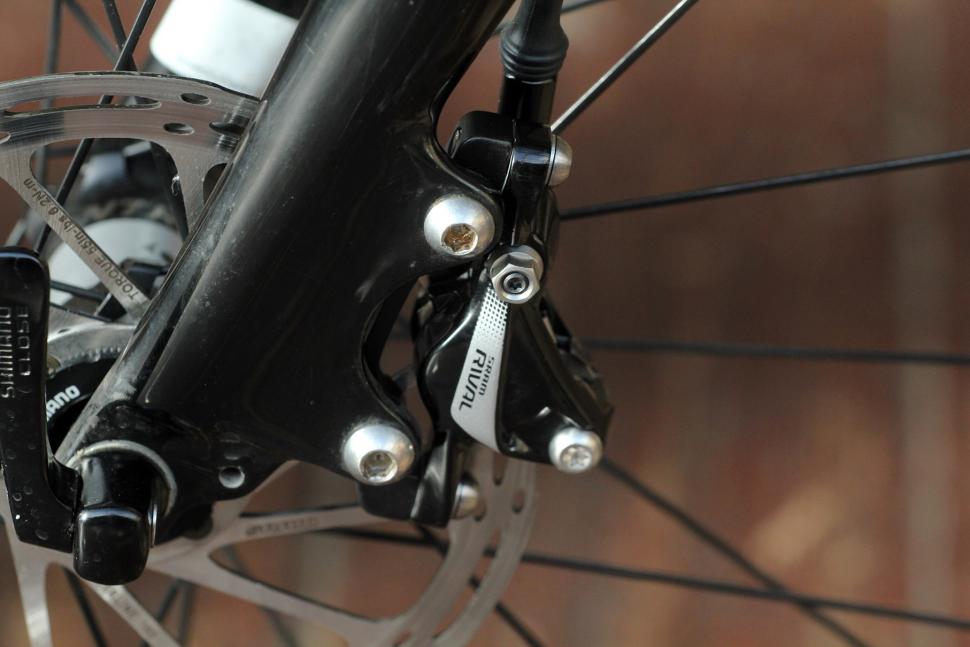


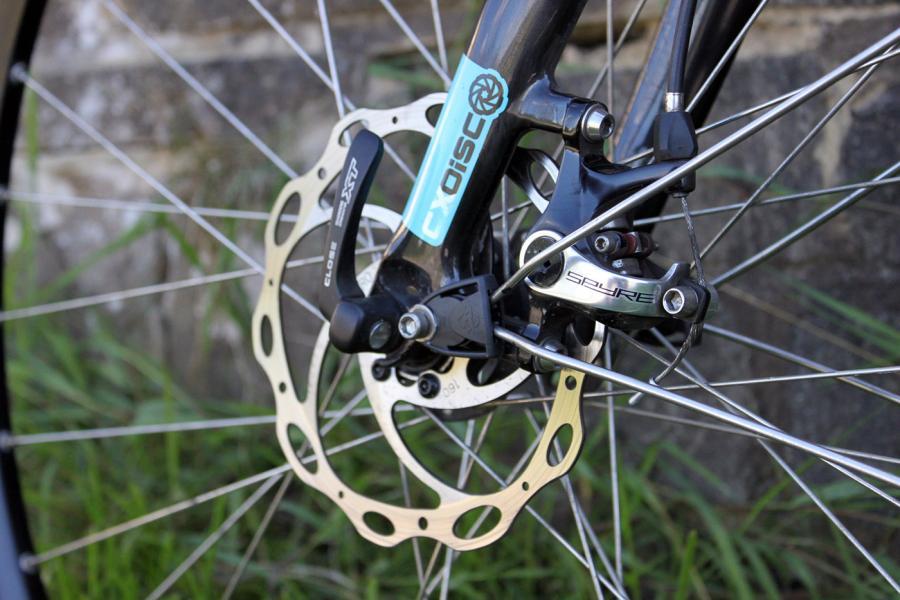

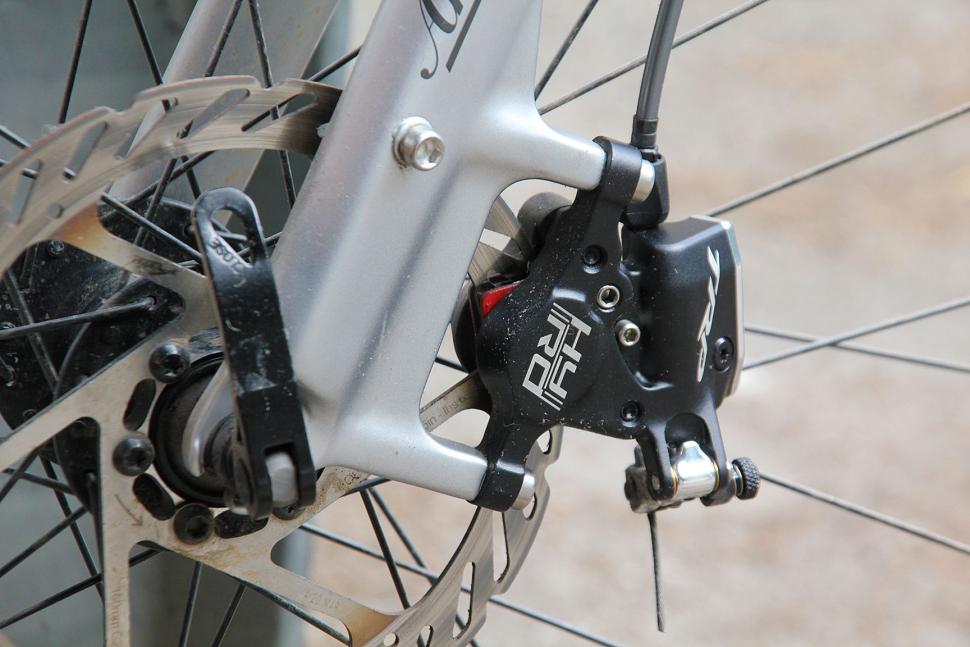

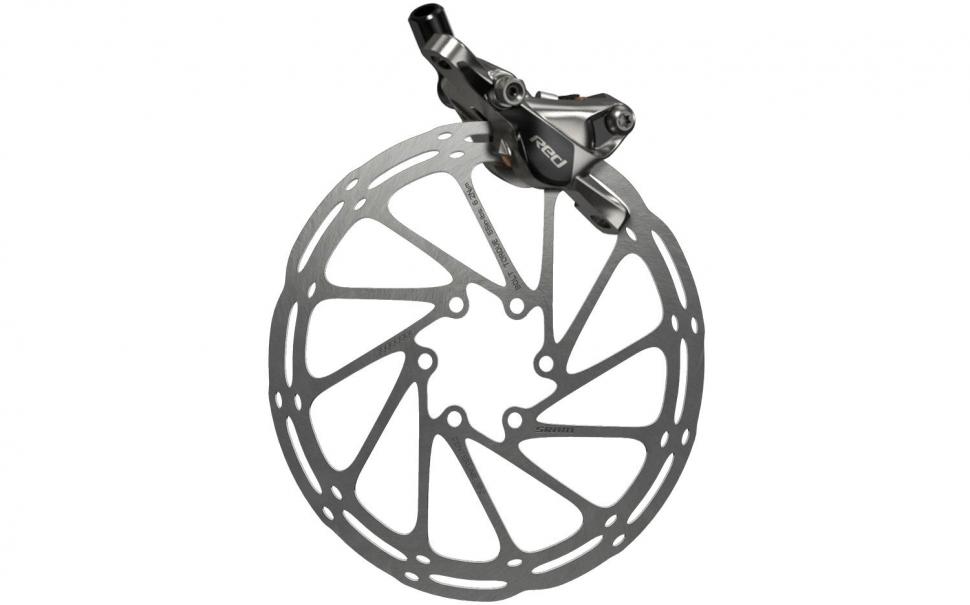
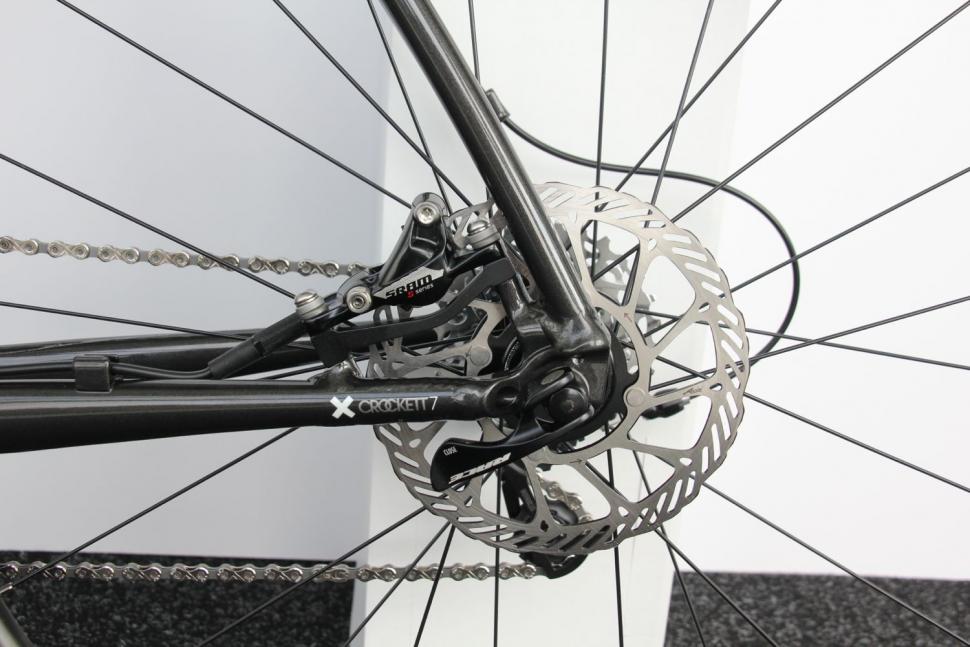
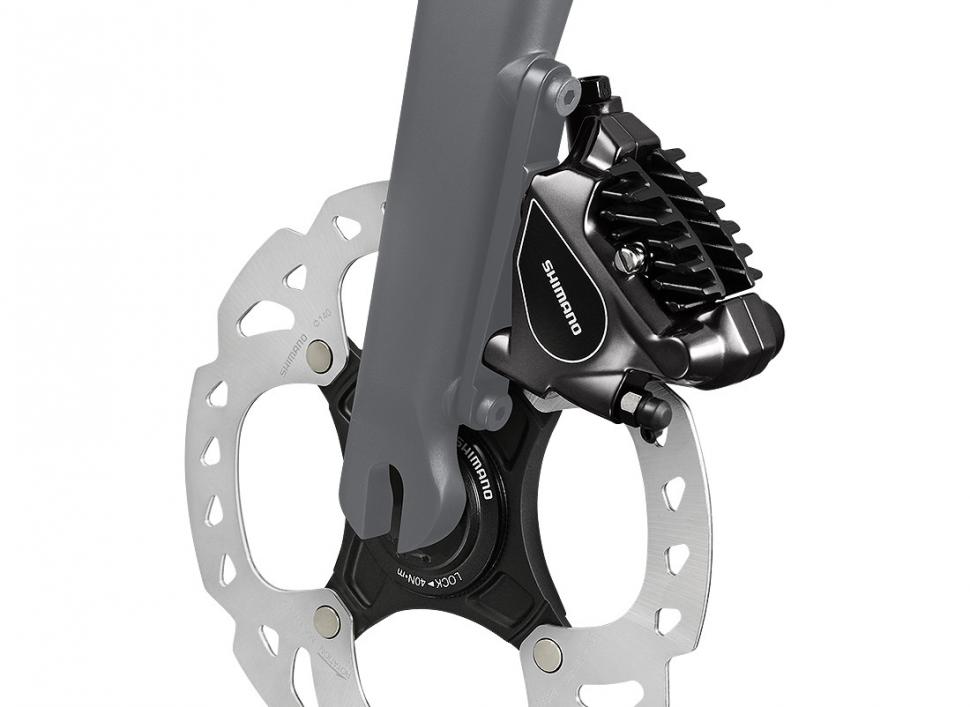
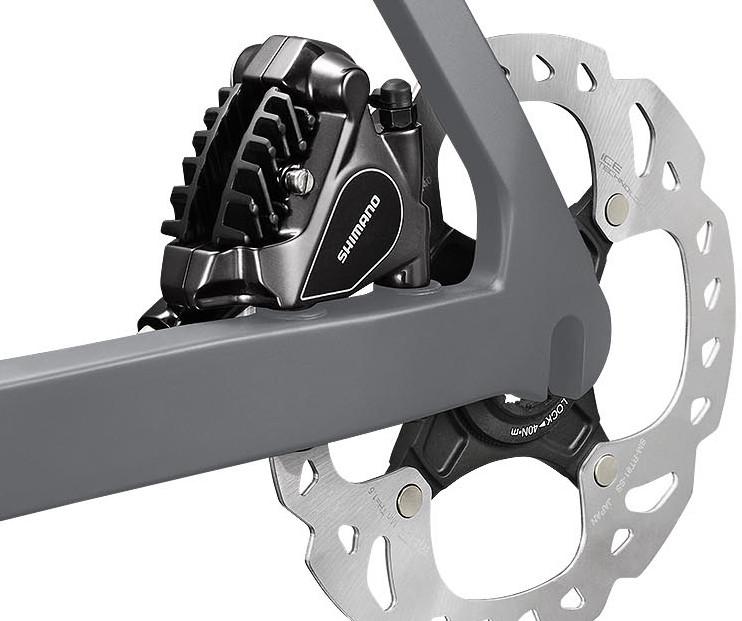
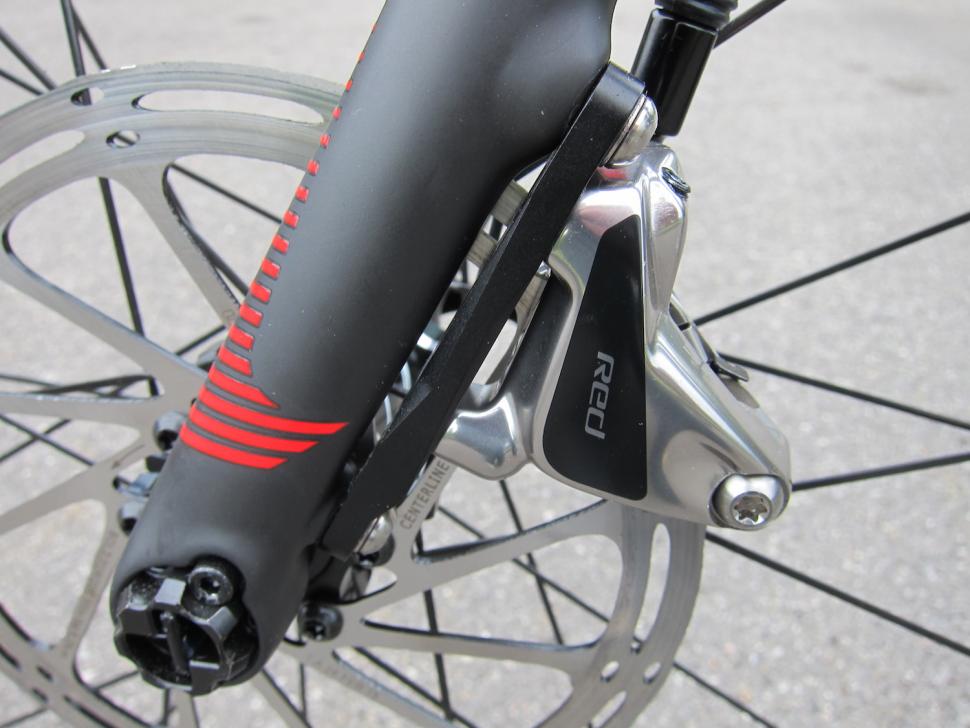
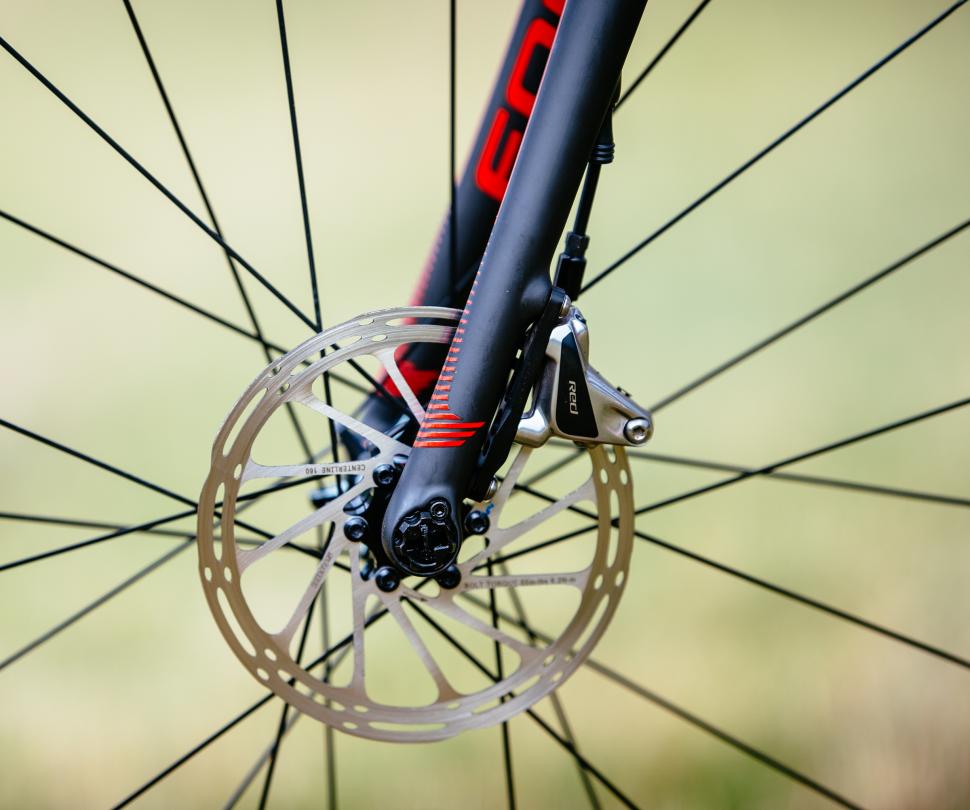


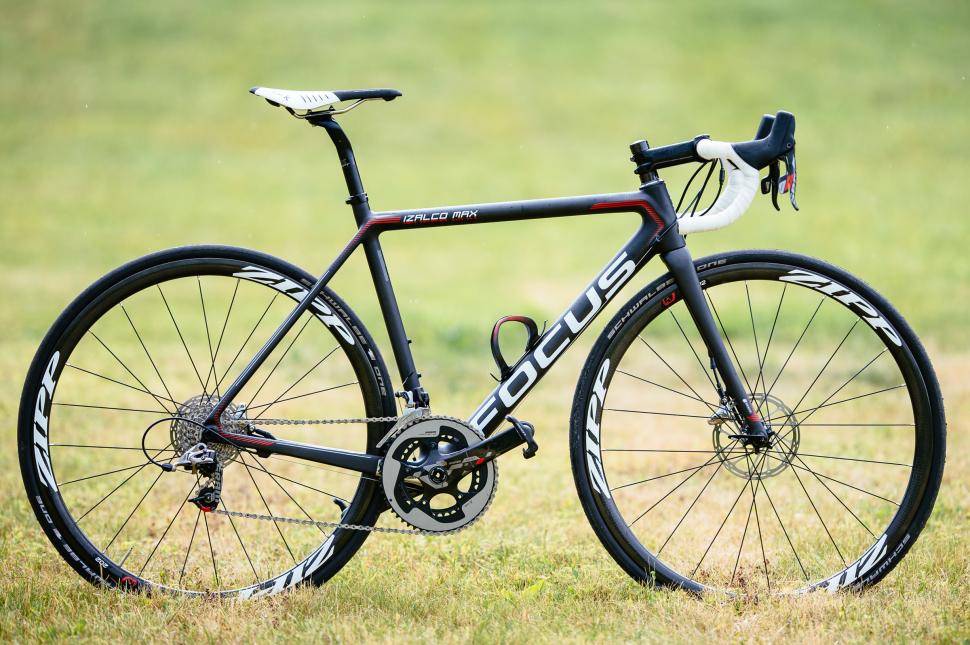


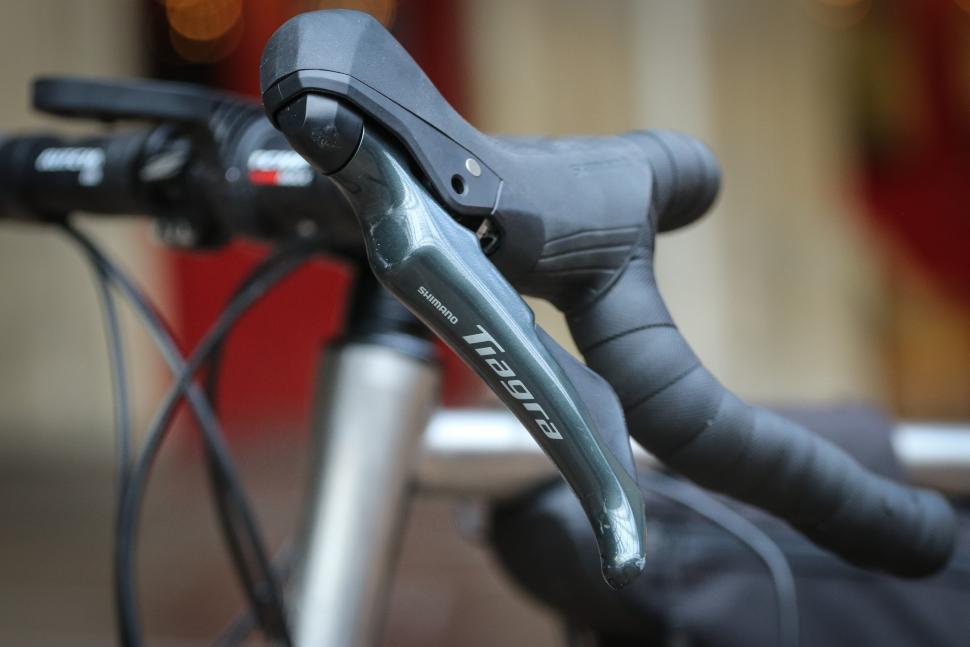
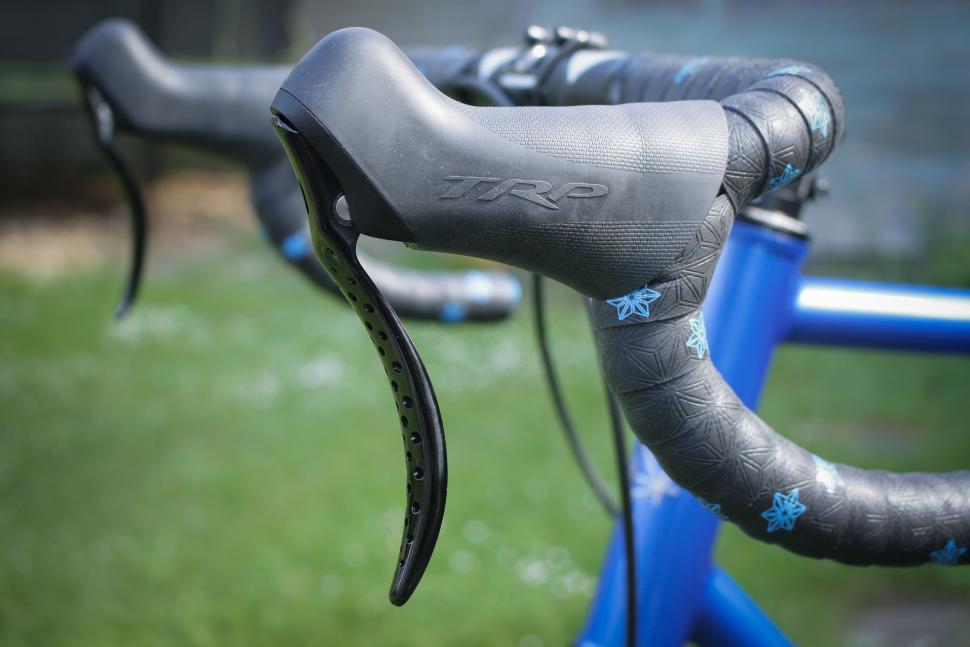
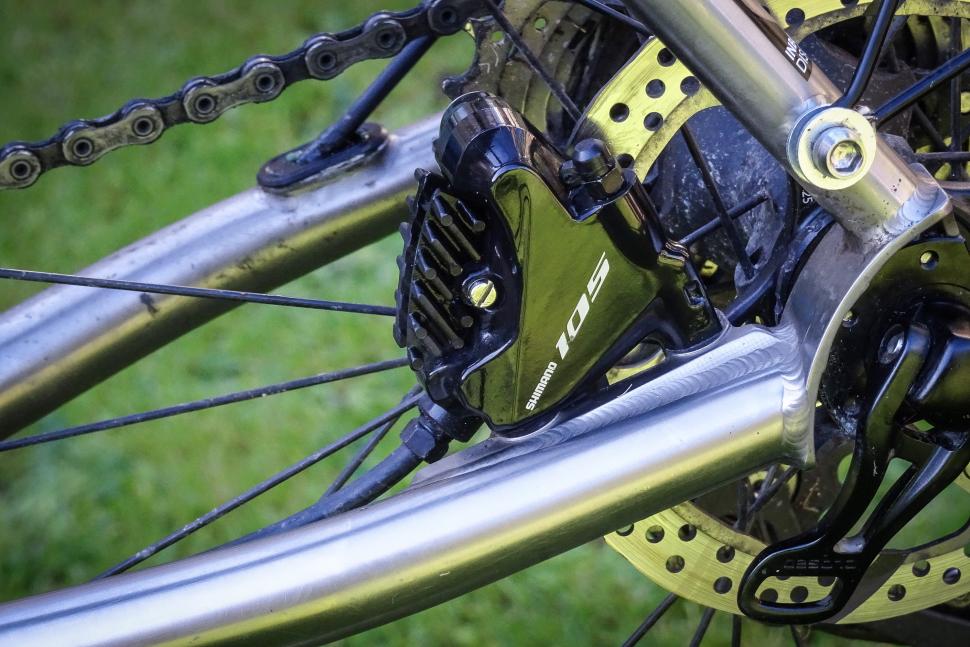
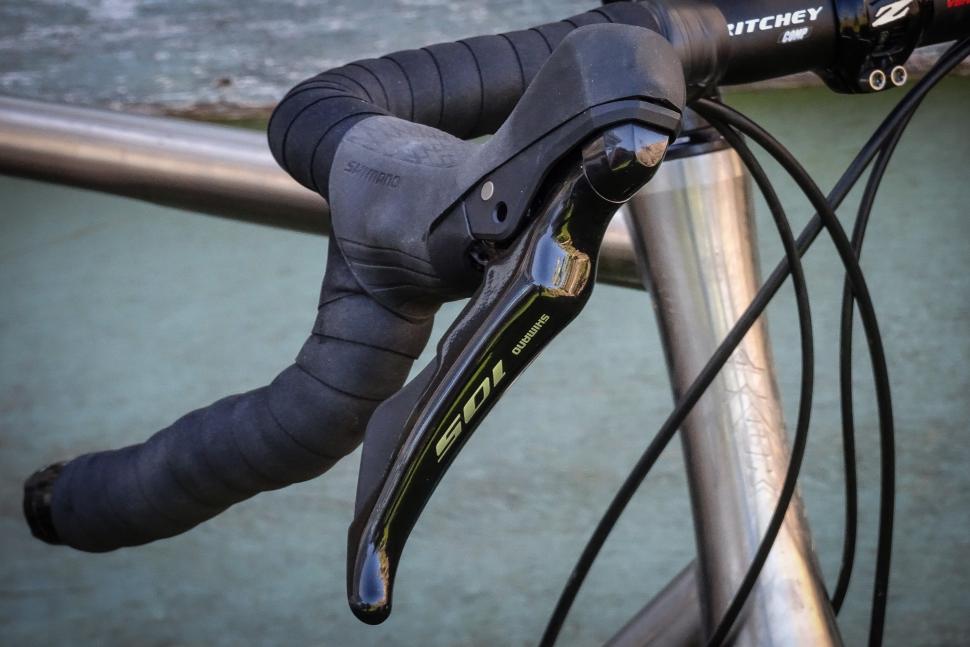


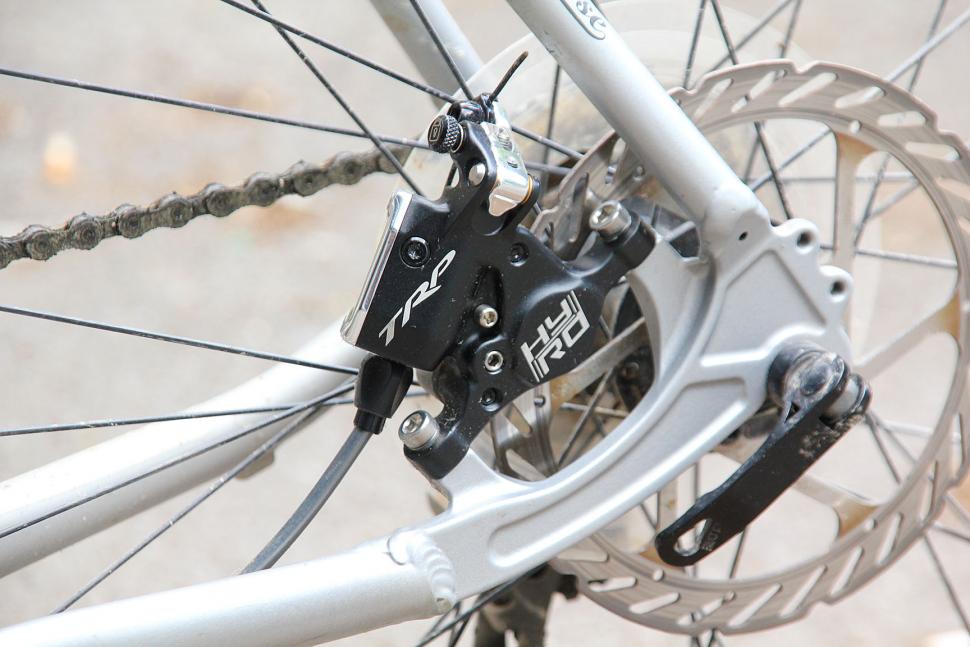



Add new comment
72 comments
A couple of key benefits missing from the first section:
1. No rim wear.
2. No more black brake sludge! (One of my favourite reasons to use discs.)
There is endless discussion of why disc brakes aren't better or aren't needed or are some marketing gimmick, and 99.9% of it comes from people who haven't used them. Try them, and you'll find that all the your reservations are misplaced—unless, perhaps, you're the sort who only uses 23mm tyres and won't venture out unless it's shorts weather and the tarmac's bone dry.
The only thing I don't like about discs is that you can't use radial lacing
for all the benefits of disc brakes, and they are considerable, maintenance and setup are key issues though as these spread down into more every day riders bikes, because Ive had friends with hydraulic brakes that had hellish problems trying to get them fixed when they went wrong, they seemed to just permanently leak, and it meant the bike was fundamentally unrideable as no-one is going to trust a brake system that might not be quite there when you need it.
and whilst the disk brakes on my road bike are cable operated (I was firmly put off the hassle of hydraulics) the margins between a free running disc and one that is slightly rubbing or modulating on braking because its slightly out of alignment, seems to be one of those measured in microns, maybe its fine if you dismantle your bike after every ride and clean every piece, before putting them back together, but outside of the obsessive and pro ranks most people dont do that or go on a how to setup brake discs course first to ride a bike.
for all their faults, rim brakes are dead simple to fix and maintain for the average rider, and thats a big plus in terms of usable bike technology IMO
Very few are saying that it's unsafe to have both disc formats in a peleton. There are already huge differences in the way riders slow down anyway (just look what happened to G in the tour), whether due to braking ability/confidance or line choice.
Disc brakes in the pro scene won't make much difference to the racing at all, other than in the wet when those on discs will have more confidance than those on rims.
However, saying that discs will have little impact on the pro racing does not make them irrelevant, because as all those on here who have tried them are saying, for the average joe they are the far better option. We just need the wheel/rim manufacturers bring out some inovations so that the current downsides to discs begin to disappear.
For me as a fairly experienced "average" commuter/weekend rider, I didn't even fully understand the whole "modulation" concept until I had really tried discs in a variety of conditions and used bikes with/without them. As the guy from Sram said in the article modulation "is not a term we particularly care for" - can I suggest for the road.cc cycling glossary "white knuckle braking without skidding out of control" is a better term ?
?
After some experience I now get the idea - and I understand the concept of gradual, controlled braking without locking the wheel etc - but I'm not sure how helpful it is for articles to keep going on about it as I am guessing other average punters like me won't really undertstand it, think about it or need to know it: all they want to know is the answer to a simple question: "True or False" - can I grab a handful of lever when someone lets their dog run in front of me on 20ft of extendable string (even though"it won't hurt you", and "it just wants to say hello") and stop safely, or will I go into an uncontrollable skid and fall off?".
Rider skill and willingness to adapt hasn't been mentioned much either: it takes ages to get used to a new bike / bit of kit / technique, and although there is a big financial element (really, that's the crunch,yes?) we all adapted to V brakes/ Cantis, from leather faced brakeblocks on proper metal wheels all the way to super stylee swisstops and carbon fibre etc (and posting on forums instead of sending in letters to magazines) without too much hassle. I used to love riding no handed and changing my old downtube shifter with my foot, but I didn't chain myself to the bike shed to protest when brifters came along, I just adapted my technique.
Either way, as a total disc brake convert even I will go back to rim brakes if we are basically saying "Discs = less skidding", because surely skidding is still one of the most fun things about riding a bike and still cool, no?
you can change gear on your brifter with your foot? can i see the video? can you also brake with the foot?:D
The are like most cable discs in that only one pad moves when the brake is applied, and the disc is pushed across to the second pad. I have experience with loads of disc brakes and I've yet to come across a disc brake of similar design that hasn't presented some similar issue to the one you describe. The shimano ones are actually better than most, but still not great, although with the shimano ones it tends to be the rotor that presents the problem, and as with the calipers themsolves, rotors vary in quality. If you have one that's made of some form of cheese maskerading as steel, or one that wasn't made true, or wheel that has rotor mounts slightly out of alignment, or a frame where the mounts have not been aligned/faced correctly, then you have problems.
There is no doubt that disc brakes are more sensitive to manufacturing tolorances than rim brakes.
The TRP spyre brakes however are fantastic and have never presented me with any such issues (except when I tried fitting them to someones frame only to find the mount on the frame was not aligned correctly). They are as fit and forget as hydraulics, and it's all because both pads move, as per hydraulic brakes.
I suggest you switch your shimano brakes to Spyres or some Shimano hydraulics, and then you'll never want rim brakes again.
With all the panache and bike handling skills I display, I might as well be doing so. , but the problem is I've got Campag feet and Shimano brifters. Incompatibility, you see...
, but the problem is I've got Campag feet and Shimano brifters. Incompatibility, you see...
The "more power" thing is a complete distraction - yes they are more powerful than rim brakes but they deliver that power in a far more consistent controllable way. I've never once unintentionally locked the wheels up on my disc-braked CX whether using it with road tyres or CX tyres. But it's only one factor in the argument.
Where disc brakes win is on the side issues that very few riders ever consider. Things like cable routing (with hydraulic hoses you can do whatever you want, run them internally, round corners), there's never any need to unwrap bars to replace cables, you simply bleed the brakes (maybe once a year at most), the levers maintain the same feel and travel no matter how much the pads wear, there's no braking gunk all over the rims, the wheels can be stronger/lighter/more aero cos they don't need a braking surface, they don't wear out because all your braking is done through a steel disc that is replaceable for a few 10's of ££ (rather than £1000 for your nice shiny carbon rims!) and they work even if you knock your wheel a bit out of true.
The quoted downsides:
more weight - really? You're worried about an extra 200g over an equivalent rim-braked bike? Once you've loaded your bike up with GPS, lights, saddle bag, 2 water bottles, top tube mounted feed bag, power cranks and all the other crap that I see hanging from the bikes of your average Sportive ride, you're really worried about an extra few grams?
less aero - again, really? See above - you've loaded your bike down with all that to set out for a 100 mile Sportive on public roads with things like junctions, traffic lights, shit road surfaces, lots of cars and you're worried that it may take you 8 seconds longer to cover that distance? OK then... Rather than say, being able to stop half way down that bumpy descent in the rain... For a TT, yes, I see your point but for normal every day riding - Sportives, club runs, general riding it's irrelevant.
Rather than say, being able to stop half way down that bumpy descent in the rain... For a TT, yes, I see your point but for normal every day riding - Sportives, club runs, general riding it's irrelevant.
longer to change a wheel - You're not a pro. You'll be like 99.9% of riders who get a puncture; not waiting for a team car but sitting there at the side of the road for 10 minutes faffing, dropping your pump, losing the little valve cap, packing everything away again and then get back riding (at least, that's how I fix a puncture!) So the extra 4 seconds it takes to do up a thru-axle is irrelevant.
All of these arguments were done to death with MTBs about 10 years ago and I'd struggle to find any MTB rider wanting to go back to rim brakes! If you don't want them, don't buy them. Just accept that it's another choice that the consumer now has when buying a bike.
I always shed a tear when I wash off all the black/dark grey brake grime from my bike when I ride it in the wet. The knowledge that its yet another layer of my rims is ultimately depressing.
When Campagnolo sort out their disk range, I'll be first in the queue.
let me summarise:-
My advice from riding discs the past three years are:
No rub on my RT99s, I used to get rub when climbing out of the saddle, not sure it's better wheels or centre lock discs that made the most difference. Apart from a biannual bleed and occasional pad change there's no maintenance with hydraulic braking.
"No solutions for the screaming disk brake"
Give them a wipe with a bit of metho or hot water to remove the contaminant and prevent the squealing in the first place. Same as when you get crap your rim braked wheel.
"the cost of replacement when you contaminate the pads / disk"
Take the pads out, wash them with hot soapy water. Cost? about the same as rim brake pads.
"and just how many watts are lost by the rub..rub..rub of disk on pad when pushing on?"
If you've got pad / disc rub, then you've got an alignment issue, so align them properly in the first place. Same wattage lost when the wheel deflects and the rim rubs against the rim brake pad.
A tiny amount of copper grease stops the squeal (just like on a car), pads aren't that expensive and can be cleaned if they're muddy, if they're rubbing loosen the mounting bolts and tighten with the brake on (3x repeated max will do it).
Yet another maintenance requirement for the disc brake. My TRP rim brakes are pretty much fit and forget. They're effective, light, look good and compatible with the rest of my kit.
Discs may be great (but noisy!) for wet weather commuting, but using the bike purely for weekend & evening fitness and enjoyment as I do, the benefits just don't stack up.
Eh? A dab of grease in November will last through to spring and take 10 seconds, the pads are as easy to clean as rim brakes and last longer and re-centering the pads is far easier and faster than adjusting rim pads, more accurate and long lasting once done too. In any weather discs will stop in half the distance and with better modulation, in wet weather or on big descents you can go as fast as your tyres will let you. You can also commute as a proper part of the traffic and worry less about a car stopping faster than you, they are THAT good.
I love disc brakes (hydraulic) and wouldn't go back to rim brakes. For me its the reliability in all weathers and conditions - the brakes just always work and work consistently. It's also the modulation - no hauling on the brakes hard on a descent not being quite sure of when they will kick in, meaning that you brake harder than you may otherwise wish to provide a bit of a safety net. With discs, I can always give the exact amount of braking that I want without having to worry.
The modulation really is a total eye openener if you've not used them before. Yes, disc brakes have a lot more power, but the positioning closer to the hubs means that the functional range of power you can apply is far greater (it takes far more braking force to lock up the wheels when the braking force is being applied closer to the hub - basic physics).
I occassionally get a nasty squeal from the brakes, but not very often and given the vastly better performance it is not enough to put me off. My pads and rotors don't rub when I ride - most of this can be avoided if you properly space the pads when positioning the calipers to the rotors.
Another major advantage is to do with the wheels. With rim brakes, fancy wheels are essentially a consumable. You will wear through them. With dics you don't have that worry or financial burden.
I love disc brakes (hydraulic) and wouldn't go back to rim brakes. For me its the reliability in all weathers and conditions - the brakes just always work and work consistently. It's also the modulation - no hauling on the brakes hard on a descent not being quite sure of when they will kick in, meaning that you brake harder than you may otherwise wish to provide a bit of a safety net. With discs, I can always give the exact amount of braking that I want without having to worry.
The modulation really is a total eye openener if you've not used them before. Yes, disc brakes have a lot more power, but the positioning closer to the hubs means that the functional range of power you can apply is far greater (it takes far more braking force to lock up the wheels when the braking force is being applied closer to the hub - basic physics).
I occassionally get a nasty squeal from the brakes, but not very often and given the vastly better performance it is not enough to put me off. My pads and rotors don't rub when I ride - most of this can be avoided if you properly space the pads when positioning the calipers to the rotors.
Another major advantage is to do with the wheels. With rim brakes, fancy wheels are essentially a consumable. You will wear through them. With dics you don't have that worry or financial burden.
Commuting with hydraulic discs is so much better than rim brakes. Far better in the wet and I'm not getting through rims at an unhealthy rate. It's a no brainer.
This thread is full of information about disc-specific maintenance (dealing with rubbing and bending back warped discs, bleeding the system, applying special grease ) . My point was that they have new maintenance requirements that I'd rather not have to deal with.
Come off it! See https://www.youtube.com/watch?v=uHFSSXOSnxs
I agree , as I've said - for wet weather and commuting they're probably ideal. And having used them on MTB's for many years they remain effective in the wet and muddy conditions.
This isn't the kind of riding I do on the road.
Horses for courses, eh?
Article needs updating to include the hybrid Yokozuna/Juin Tech R1 type brakes. In many ways better than the HY/RDs
But why do disc brakes offer more control when braking?
I would have though due to the larger offset from the wheel centre, rim brakes would have a larger braking range for a given brake force.
Simply they can use greater torque forces on a sheet of solid metal than hollow rims. I'd guess to get the same forces used with hydralic brakes at the rim, they'd have to build really solid heavy rims and that would be detrimental performance wise, to have that added weight at the furthest centrifugal point. Far easier to have the additional weight at the central point of a wheel.
Note there are always exceptions.. a cheap set of 'mechanical' brakes probably won't stop as well as a decent set of rim calipers. Hydralics is where it's at for more controlled braking.
Extra note, disc brakes aren't the holy grail for roadies.. if you don't need extra stopping power or modulation then you don't need discs. For anything off-road where stuff can get clogged or hamper performance in any way, discs are good, if you ride carbon wheels or are a particuarly heavy braker discs are probably good for you, if you mainly time trial, triathlon or hill climb, discs may not be useful. Also discs are more expensive than rim calipers, rim calipers are more expensive than canti's.. and all of these mechanical advances are more expensive than getting new soles for your shoes, if that's how you'd prefer to apply the brakes.
My guess is that the disc pads are a lot more solid/rigid than the rubber pads, so there's a more linear relationship between applied force and the amount of friction (braking force) generated. Also, disc pads are set up parallel with the disc whereas rim brakes usually have a slight angle (toe-in) to prevent noise.
Thanks for your reply. I understand your point, but I don't think it's about the total amount of brake force. As is says in the above article, you can lock up rim brakes, so the max force you can apply is already enough.
If the goal is better braking range, I thought (from an engineering/physics perspective) that the larger offset from the wheel centre would give rim brakes the inherent advantage.
You could be onto something there
No you're right, it's about modulation (another reason caliper brake pads are towed in), and the 'force' I refer to is within the pistons which are pressured onto each side of the disc. As I understand it you need the additional force due to the central location of the disc. You'd certainly need less at the 'rim', but that would mean a more sturdy rim, which is not where you want additional weight on a rotating wheel.
A real world advantage I can give you is that I can brake more confidently on discs with my hands on the hoods. Where as I have to be in the drops to get the same level of braking force on my other bike. Another is in wet riding decending a hill where in the dry on a rim caliper bike I have no issues, but in the wet I've had the odd hairy moment.... I think we've all had a few moments where you come accross an unexpected T junction at the bottom of decent in the wet etc..
I like disks. I don't care what anyone else rides as long as they're having fun.
Spinning discs of death...remeber all that guff?
They're a bit heavier. Perform way better in all conditions. Open up oportunities for better aero. Bosh
Pages